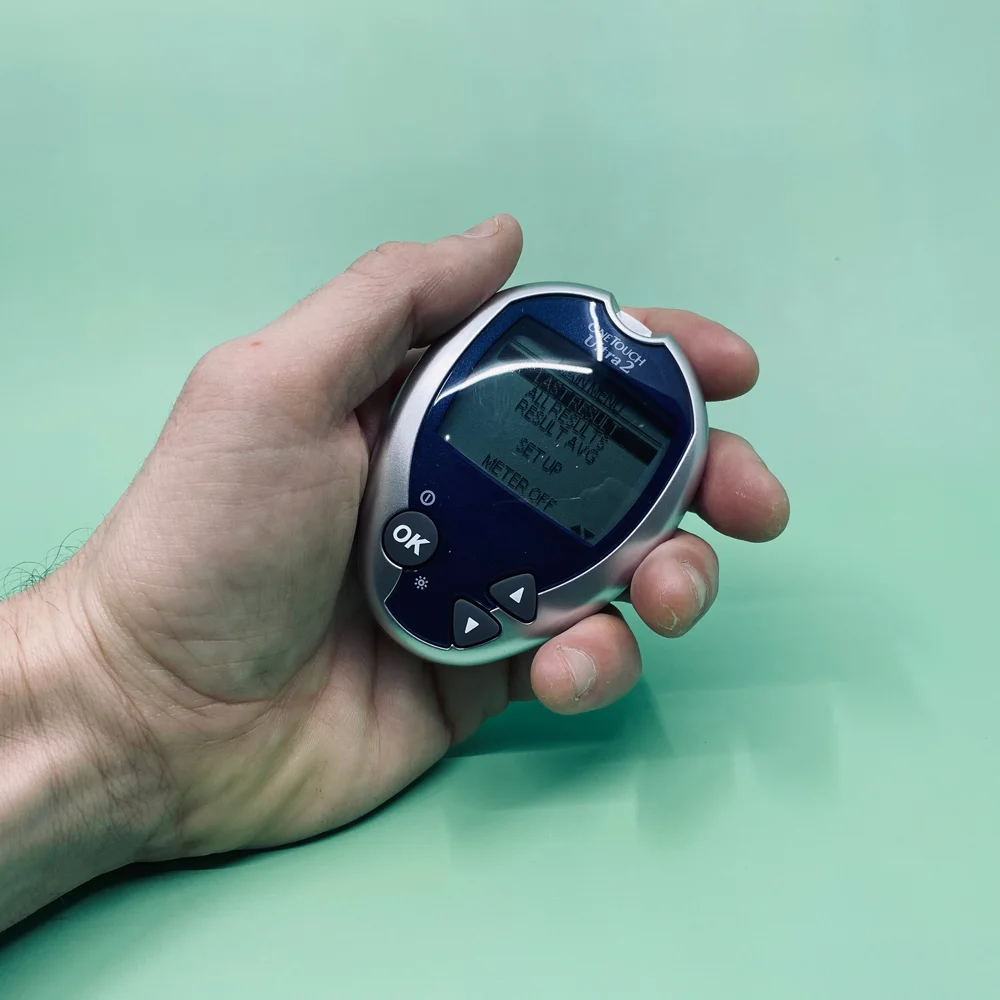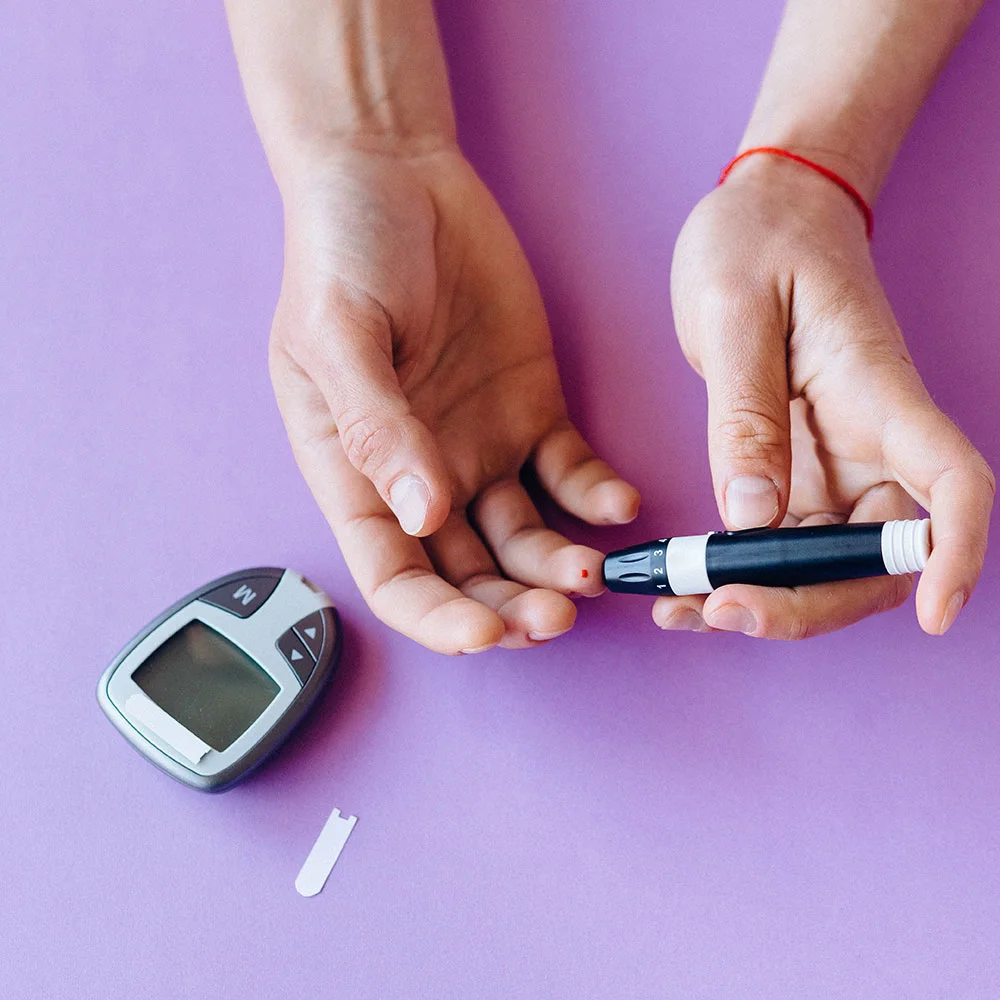Insulin for diabetes management: types, pens, and pumps

Reviewed by Felix Gussone, MD, Ro,
Written by Ellyn Vohnoutka, BSN, RN
last updated: Mar 10, 2022
6 min read
Here's what we'll cover
Diabetes mellitus is a chronic disease that causes blood glucose to become higher than normal. The American Diabetes Association (ADA) estimates that 37.3 million Americans, or 11.3% of the United States population, live with diabetes (ADA, 2022).
People with type 1 diabetes must use insulin therapy, the most common way to treat this chronic illness. There are various insulin types available and ways for you to administer them.
Weight loss
Get access to GLP-1 medication (if prescribed) and 1:1 support to meet your weight goals
What is insulin?
Insulin is a hormone made by your pancreas' beta cells that allow your body to use glucose (sugar) for energy. Virtually all cells in your body have receptors for insulin, but they are most heavily concentrated in your liver and fat cells (Thota, 2021).
When insulin binds to the insulin receptors on your cells, it activates transporters that bring glucose from the bloodstream into your cells. Your cells then transform glucose into energy (Thota, 2021).
In addition to keeping your blood sugar levels stable, you also need insulin to grow and maintain your body’s tissues, especially skeletal muscle and fat tissues (Munguia, 2021).
Diabetes is a condition that happens when your body either doesn’t make enough insulin or can’t use its insulin (insulin resistance). It causes glucose to build up in your bloodstream. Over time, it can cause damage to your blood vessels, heart disease, problems with your vision, kidney disease, or nerve pain (Sapra, 2021).
Medical researchers have developed synthetic insulins that can treat people with diabetes. This helps them keep their blood glucose levels stable and avoid the adverse side effects of chronic high blood sugar levels (Thota, 2021).
Managing diabetes with insulin
There are different forms of diabetes. They all stem from disruptions in how your body makes or uses insulin. Here are the three most common forms of diabetes.
Type 1 diabetes
Type 1 diabetes used to be called juvenile-onset diabetes, because it is most commonly diagnosed earlier in life. It is an autoimmune disorder in which the body’s immune system mistakenly attacks the beta cells in the pancreas (Thota, 2021; Sapra, 2021).
When the beta cells are damaged or destroyed, your body can no longer make enough insulin to control blood sugar levels. People with this disorder must take life-long treatment with synthetic insulin to keep their blood sugar levels stable (Thota, 2021).
Type 1 diabetes is also called “insulin-dependent diabetes” (even though other types of diabetes can also require insulin shots).
Type 2 diabetes
Type 2 diabetes is the most common type of diabetes—of the estimated 37 million Americans with diabetes, 90–95% have type 2. It used to be called late-onset diabetes, because most people with the condition were diagnosed after 45 years old. However, children and teenagers are now developing this condition more often (Lawrence, 2021).
In type 2 diabetes, the body still makes the insulin it needs (the pancreas is still working) but loses its ability to use it. The most common risk factors for this are genetics, obesity, and a sedentary lifestyle (USPSTF, 2021).
In the early stages of type 2 diabetes, oral medications like metformin are available to help your body use the insulin you have more effectively. Over time, the pancreas will release more insulin to try to lower blood sugars until the beta cells eventually burn out and stop making it. Treatment with synthetic insulin is necessary for this later stage of type 2 diabetes in some people (Petznick, 2011).
Gestational diabetes
Gestational diabetes (GDM), or pregnancy diabetes, affects about 6% of all pregnancies in the U.S. Researchers don’t know precisely what causes GDM, but they suspect that hormone changes affect the body’s ability to make and use insulin. Untreated, GDM can cause health problems for both the mother and fetus (Garrison, 2015; Sapra, 2021).
Fortunately, you can treat most cases of GDM with diet and exercise alone. Many oral and injectable diabetes medications aren’t safe to take during pregnancy, so synthetic insulin injections are used if diet and exercise aren’t enough to control blood sugars (Garrison, 2015).
Managing blood glucose levels
With diabetes, you’ll need to monitor your blood glucose levels frequently and make sure your blood sugar level isn’t too high (called hyperglycemia) or too low (called hypoglycemia). This is usually done using a fingerstick blood glucose test or a glucose sensor device. These both give you instant readings of your blood sugar level.
Your provider will also order occasional lab tests, including a hemoglobin-A1c (Hb A1c) level, which estimates your blood glucose control over the past three months. They will use this information to adjust your insulin doses (Thota, 2021).
Contrary to common belief, not all people diagnosed with diabetes need insulin to control their blood sugar levels, and insulin is also not the only way to treat this chronic disease. Treating diabetes is much more multifaceted and includes many medications and lifestyle changes (more on that below).
Types of insulin
Thanks to modern medicine, we now have an array of synthetic insulin that mimics how natural insulin acts in the body. This includes having a low level of insulin constantly (the basal level) with spikes around mealtime (boluses).
Here are the different types of insulin that a healthcare provider might prescribe.
Rapid-acting insulin
Insulin lispro is a rapid-acting form of insulin. You inject it into the tissue under the skin of your thighs, arms, buttocks, or abdomen (this is known as a subcutaneous injection). Because it works so quickly, you should take it no more than 15 minutes before you eat or immediately afterward (Islam, 2021).
Short-acting insulin
Short-acting insulin is most commonly known as regular insulin. You inject this type of insulin 30 to 40 minutes before each meal. Regular insulin starts to lower your blood sugar in about an hour. Its effects will peak two to four hours after your injection and last about four hours (Munguia, 2021).
Intermediate-acting insulin
NPH insulin is an intermediate-acting insulin. It’s often called basal insulin because you take it at scheduled times to provide a constant supply of insulin for your body—rather than just when you eat. It’s also commonly used to treat gestational diabetes.
NPH insulin is usually dosed twice a day (morning and evening). One significant advantage of NPH is that it can be included in premixed formulas with regular insulin (Saleem, 2021).
Long-acting insulin
Insulin glargine is a long-acting insulin that you can inject once daily to provide a base level of insulin throughout the day.
People often take both long-acting insulin once a day and rapid-acting insulin with meals to achieve the best control over their blood sugars. Insulin glargine starts working 90 minutes to two hours after injecting it and lasts up to 24 hours. You take it at the same time each day (Cunningham, 2021).
Premixed/combination insulin
Premixed insulins are a combination of intermediate-acting NPH insulin and rapid or short-acting insulin. There are several different combinations available. The ADA recommends moving to premixed formulations if you have well-controlled diabetes but your HbA1c level (a test that measures your average blood sugar for the past three months) remains above your goal (Saleem, 2021).
How do you administer insulin?
You administer most forms of insulin by injecting it into the fatty tissue beneath the skin of your abdomen, upper arms, or thighs. Intravenous (right into the bloodstream) insulin is available but only in a hospital setting because it requires close monitoring. Researchers have also developed inhaled insulin, but it isn’t widely used (Thota, 2021).
Insulin syringes
Insulin syringes are the most common way to administer insulin. You draw up the amount of insulin you want to give into a specially marked syringe and then inject it into your chosen area. The syringe is then disposed of in a safe container.
Insulin syringes are an easy and convenient option for many people, but those with vision problems or poor hand dexterity might have difficulty using them (Dave, 2021).
Insulin pens
More user-friendly forms of insulin delivery include the insulin pen and the insulin pump.
Unlike syringes, insulin pens come preloaded with your prescribed insulin, so you don’t need to draw it from a vial. Simply attach a needle, dial the pen to the correct dose, and inject the insulin. You then dispose of the needle in a safe container. Insulin pens have become increasingly popular in recent years because they are so easy to use (Dave, 2021).
Insulin pumps
The insulin pump is a wearable device that allows for a continuous infusion of low levels of insulin, with larger doses as needed at mealtime. These are computerized devices that simulate the action of your natural pancreas. The pump attaches to your body and releases small, programmed amounts of short-acting insulin continuously throughout the day. This keeps your blood sugar levels stable (Thota, 2021; Dave, 2021).
Insulin inhalers
In 2014, the U.S. Food and Drug Administration approved an inhalable insulin called Afrezza. This rapid-acting insulin passes through the lungs and into the bloodstream.
You take an insulin inhaler right before meals. It starts acting within 12 minutes and can be used by those with type-1 or type-2 diabetes. People with asthma, chronic obstructive pulmonary disease (COPD), or other lung diseases shouldn’t use Afrezza (Thota, 2021; Heinemann, 2018).
Ask your healthcare provider if this type of insulin therapy is right for you.
Insulin side effects and reactions
The most common side effect of using insulin is hypoglycemia or low blood sugar levels. Other less common effects of insulin are weight gain and, rarely, abnormal electrolyte levels (Thota, 2021).
If you take insulin, you should know the signs of hypoglycemia and how to treat them. The most common symptoms are (Thota, 2021; Islam, 2021):
Headache
Dizziness
Palpitations
Sweating
Abdominal pain
Blurred vision
Mild-to-moderate hypoglycemia means a blood sugar level less than 70 with or without symptoms. If you experience this, the treatment is to raise your blood sugar by taking in 15 grams of carbohydrates. This is also referred to as the 15-15 rule (have 15 grams of carbohydrates to raise your blood sugar and check your blood sugar after 15 minutes). If it is still below 70, repeat the cycle of eating, waiting 15 minutes, and rechecking your blood sugar (ADA, n.d.).
As you can see, when it comes to managing diabetes, there are a lot of factors at play. Your healthcare provider can work with you to develop the best treatment plan for your needs.
DISCLAIMER
If you have any medical questions or concerns, please talk to your healthcare provider. The articles on Health Guide are underpinned by peer-reviewed research and information drawn from medical societies and governmental agencies. However, they are not a substitute for professional medical advice, diagnosis, or treatment.
American Diabetes Association (ADA) (n.d.). Hypoglycemia (Low Blood sugar) . Retrieved March 10, 2022 from https://diabetes.org/healthy-living/medication-treatments/blood-glucose-testing-and-control/hypoglycemia
American Diabetes Association (ADA). (2022). Statistics about diabetes . Retrieved March 10, 2022 from https://diabetes.org/about-us/statistics/about-diabetes
Cunningham, A. M. & Freeman, A. M. (2021). Glargine Insulin. [Updated Apr. 25, 2021]. In: StatPearls [Internet]. Retrieved from https://www.ncbi.nlm.nih.gov/books/NBK557756/
Dave, H. D. & Preuss, C. V. (2021). Human Insulin. [Updated Sep. 6, 2021]. In: StatPearls [Internet]. Retrieved from https://www.ncbi.nlm.nih.gov/books/NBK545190/
Garrison, A. (2015). Screening, diagnosis, and management of gestational diabetes mellitus. American Family Physician , 91 (7), 460-467.Retrieved from https://www.aafp.org/pubs/afp/issues/2015/0401/p460.html
Heinemann, L. & Parkin, C. G. (2018). Rethinking the viability and utility of inhaled insulin in clinical practice. Journal of Diabetes Research, 2018 , 4568903. doi: 10.1155/2018/4568903. Retrieved from https://www.ncbi.nlm.nih.gov/pmc/articles/PMC5863311/
Islam, N., Khanna, N. R., & Zito, P. M. (2021). Insulin Lispro. [Updated Nov. 15, 2021]. In: StatPearls [Internet]. Retrieved from https://www.ncbi.nlm.nih.gov/books/NBK507840/
Lawrence, J. M., Divers, J., Isom, S., Saydah, S., Imperatore, G., Pihoker, C., et al (2021). Trends in prevalence of type 1 and type 2 diabetes in children and adolescents in the US, 2001-2017. JAMA, 326 (8), 717–727. doi: 10.1001/jama.2021.11165. Retrieved from https://pubmed.ncbi.nlm.nih.gov/34427600/
Munguia, C. & Correa, R. (2021). Regular Insulin. [Updated Jul. 25, 2021]. In: StatPearls [Internet]. Retrieved from https://www.ncbi.nlm.nih.gov/books/NBK553094/
Petznick, A. (2011). Insulin management of type 2 diabetes mellitus. American Family Physician . Retrieved from https://www.aafp.org/pubs/afp/issues/2011/0715/p183.html
Saleem, F. & Sharma, A. (2021). NPH Insulin. [Updated Jun 25, 2021]. In: StatPearls [Internet]. Retrieved from https://www.ncbi.nlm.nih.gov/books/NBK549860/
Sapra, A. & Bhandari, P. (2021). Diabetes Mellitus. [Updated Sep. 18, 2021]. In: StatPearls [Internet]. Retrieved from https://www.ncbi.nlm.nih.gov/books/NBK551501/
Thota, S. & Akbar, A. (2021). Insulin. [Updated Jul. 16, 2021]. In: StatPearls [Internet]. Retrieved from https://www.ncbi.nlm.nih.gov/books/NBK560688/
U.S. Preventive Services Task Force (USPSTF), Davidson, K. W., Barry, M. J., Mangione, C. M., Cabana, M., Caughey, A. B., et al. (2021). Screening for prediabetes and type 2 diabetes: US preventive services task force recommendation statement. JAMA, 326 (8), 736–743. doi: 10.1001/jama.2021.12531 Retrieved from https://pubmed.ncbi.nlm.nih.gov/34427594/









